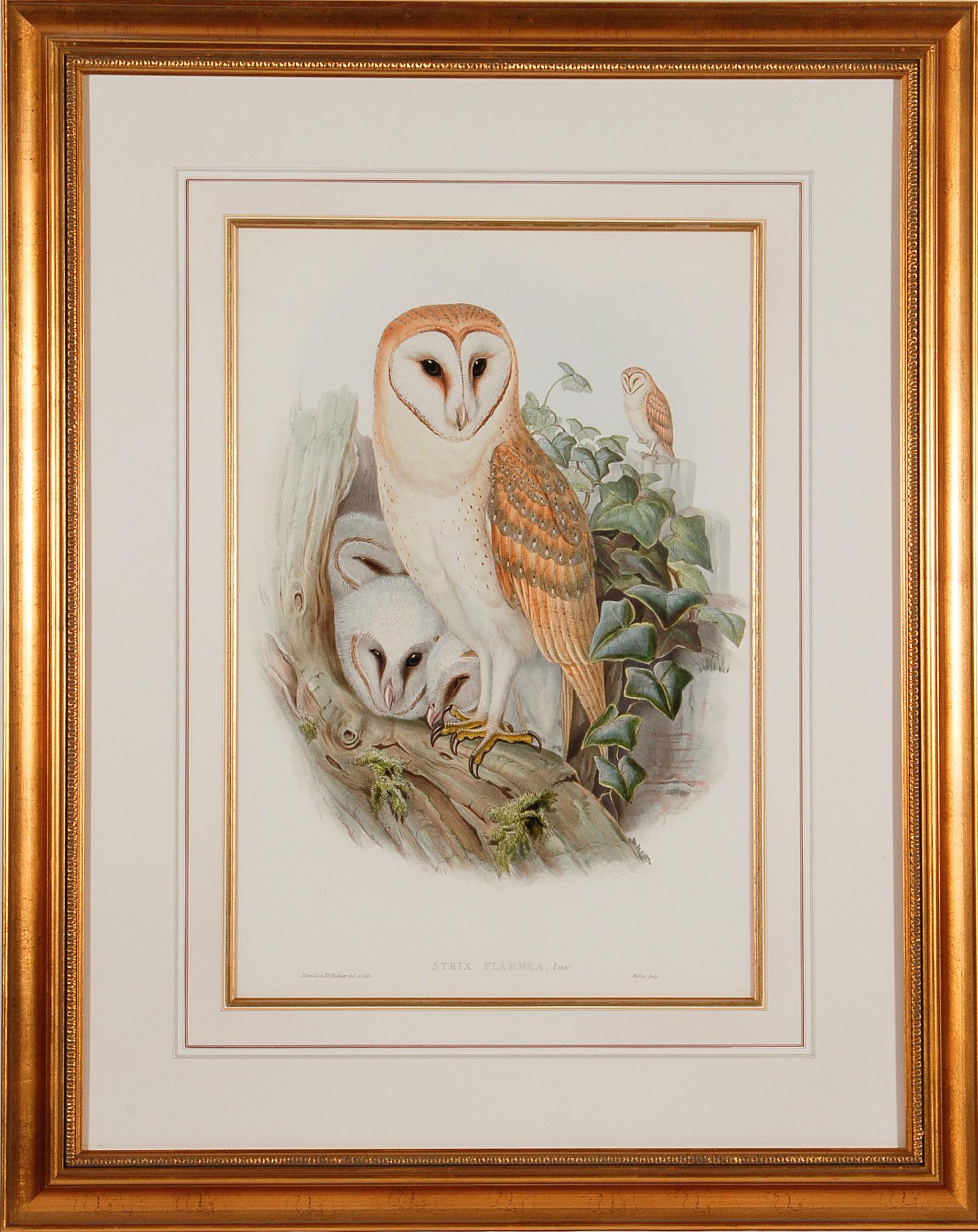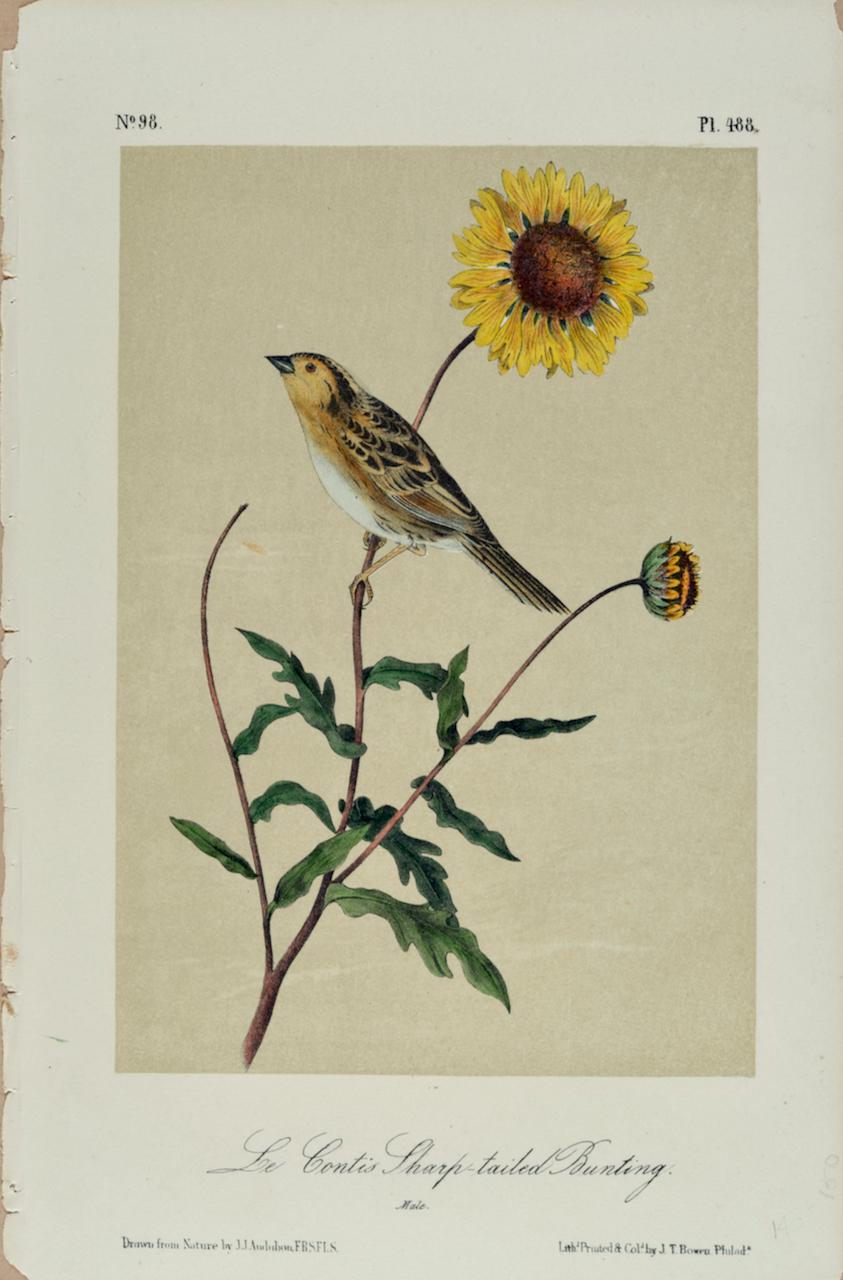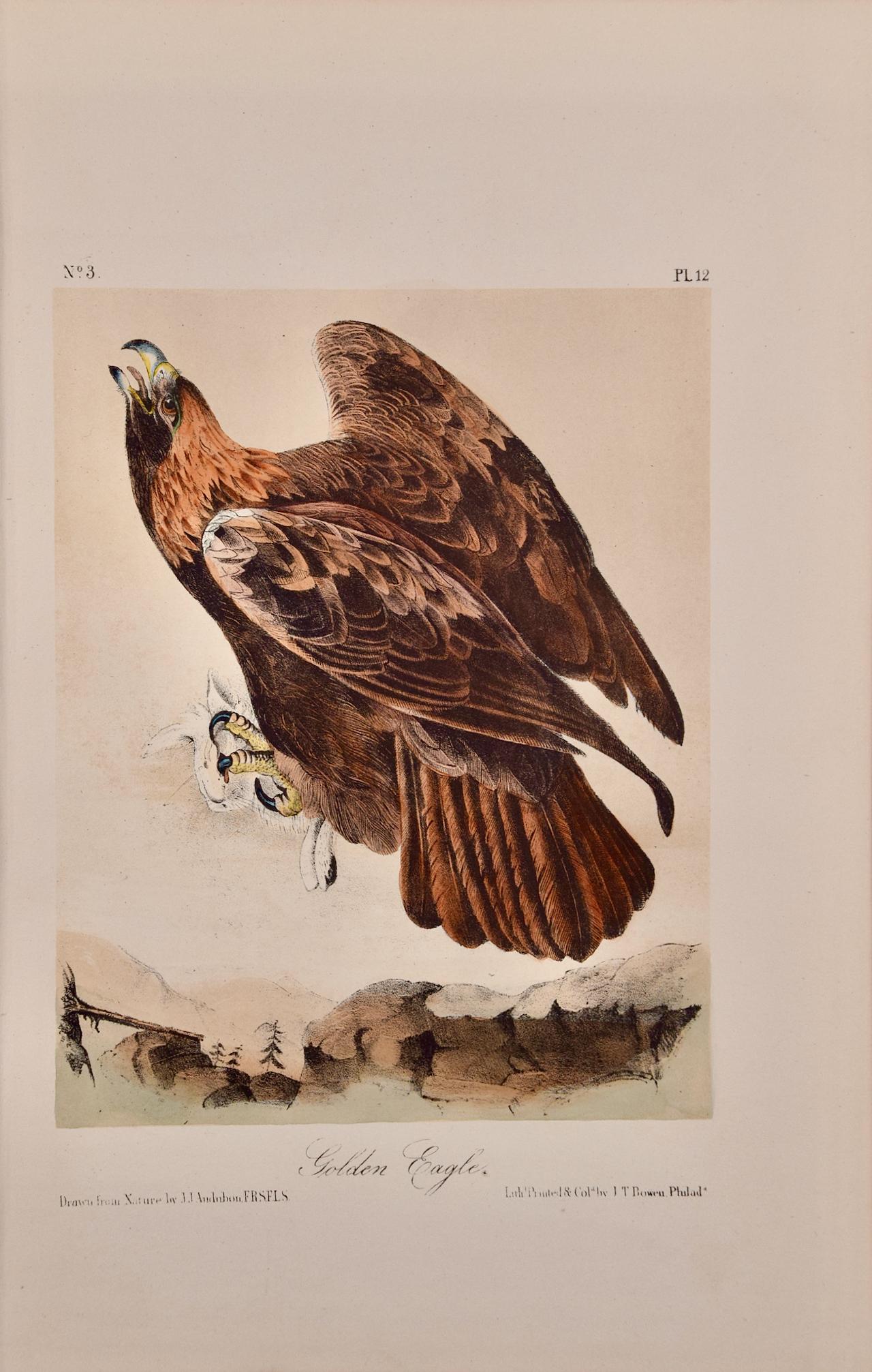After John James Audubon"Washington Sea Eagle": An Original Audubon Hand-colored Lithograph 1856
1856
About the Item
- Creator:
- Creation Year:1856
- Dimensions:Height: 10.5 in (26.67 cm)Width: 6.75 in (17.15 cm)
- Medium:
- Movement & Style:
- Period:
- Framing:Framing Options Available
- Condition:
- Gallery Location:Alamo, CA
- Reference Number:
After John James Audubon
John James Audubon was an American ornithologist, naturalist and painter. His combined interests in art and ornithology turned into a plan to make a complete pictorial record of all the bird species of North America. Audubon was notable for his extensive studies documenting all types of American birds and for his detailed illustrations that depicted the birds in their natural habitats. His major work, a color-plate book entitled The Birds of America (1827–1839), is considered one of the finest ornithological works ever completed. Audubon is also known for having identified 25 new species. He is the namesake of the National Audubon Society and his name adorns a large number of towns, neighborhoods, and streets in every part of the United States. Dozens of scientific names first published by Audubon are currently in use by the scientific community. Audubon made some excursions out West, where he hoped to record Western species he had missed, but his health began to fail. In 1848, he manifested signs of senility or possibly dementia from what is now called Alzheimer's disease, his noble mind in ruins. Audubon died at his family home in northern Manhattan on January 27, 1851. He is buried in the graveyard at the Church of the Intercession in the Trinity Church Cemetery and Mausoleum at 155th Street and Broadway in Manhattan, near his home. An imposing monument in his honor was erected at the cemetery, which is now recognized as part of the Heritage Rose District of NYC.
- ShippingRetrieving quote...Ships From: Alamo, CA
- Return PolicyA return for this item may be initiated within 7 days of delivery.
- Barn Owl Family: A Framed Original 19th C. Hand-colored Lithograph by GouldBy John Gould and Henry Constantine RichterLocated in Alamo, CAThis is a framed original 19th century hand-colored folio-sized lithograph entitled “Strix Flammea” (Barn Owl) by John Gould, from his "Birds of Great Britain", published in London between 1862 and 1873. The print depicts an adult Barn Owl perched on a log its three baby owls to the left. Another adult owl in the background on the right, presumably a male, watches over his family. There are leaves on the right contributing to this pleasant landscape composition. This striking framed Gould...Category
Mid-19th Century Naturalistic Animal Prints
MaterialsLithograph
- Le Contis Sharp-tailed Bunting: Original Audubon Hand-colored Bird LithographBy John James AudubonLocated in Alamo, CAThis is an original 19th century John James Audubon hand-colored lithograph entitled "Le Contis Sharp-tailed Bunting, Male", No. 98, Plate 488 from Audubon's "Birds of America, litho...Category
Mid-19th Century Naturalistic Animal Prints
MaterialsLithograph
- American Coot: An Original 19th C. Audubon Hand-colored Bird LithographBy John James AudubonLocated in Alamo, CAThis is an original 19th century John James Audubon hand-colored lithograph entitled "4128 Audubon, Purple Gallinule, Adult Male, Spring Plumage", No. 61, Plate 303 from Audubon's "B...Category
Mid-19th Century Naturalistic Animal Prints
MaterialsLithograph
- Golden Eagle: An Original 19th C. Audubon Hand-colored Bird LithographBy John James AudubonLocated in Alamo, CAThis is an original John James Audubon hand-colored lithograph entitled "Golden Eagle", No. 3, Plate 12 from Audubon's "Birds of America, lithographed, printed and colored by JT Bowe...Category
Late 19th Century Naturalistic Animal Prints
MaterialsLithograph
- American Bittern: An Original 1st Ed. Audubon Hand-colored Bird LithographBy John James AudubonLocated in Alamo, CAThis is an original 19th century 1st octavo edition John James Audubon hand-colored lithograph entitled "American Bittern, 1. Male 2. Female", No. 73, Plate 365 from Audubon's "Birds of America, lithographed, printed and colored by J. T. Bowen and published in Philadelphia between 1840-1844. It depicts male and female American Bittern birds standing on the ground, each looking in opposite directions. There is high grass in the background. This original 1st octavo edition hand-colored Audubon American Bittern lithograph is in excellent condition, other than a few tiny spots, which appear most likely inclusions related to the paper manufacture. The sheet measures 6.5" high by 10.25" wide. The original text pages, 94-98, from Audubon's 19th century publication are included with the lithograph. John James Audubon (1785-1851) was a naturalist and artist. He was initially unsuccessful financially prior to the publication of his famous work “The Birds of America”, spending time in debtor’s prison, once stabbing a disgruntled investor in self-defense. However, his obsession with birds and art motivated him to persist in his goal of documenting every bird in America via his watercolor paintings and publishing his works for all to enjoy. Audubon's first illustrations were published in a large elephant folio...Category
Mid-19th Century Naturalistic Animal Prints
MaterialsLithograph
- Blue-eyed Cockatoo: A Framed Original 19th C. Hand-colored Lithograph by GouldBy John Gould and Henry Constantine RichterLocated in Alamo, CAThis is a framed original 19th century hand-colored folio-sized lithograph entitled “Cacatua Ophthalimica” (Blue-eyed Cockatoo) by John Gould, from the supplement to his "Birds of Australia", published in London between 1851 and 1869. The print depicts a large blue-eyed cockatoo perched on a branch, with its head turned to the left. The scene is enhanced with leaves and sky and clouds in the background. This striking framed Gould...Category
Mid-19th Century Naturalistic Animal Prints
MaterialsLithograph
- Terriers No. 2Located in Columbia, MOTerriers No. 2 1883-84 Chromolithograph 8.5 x 11 inchesCategory
1880s Naturalistic Animal Prints
MaterialsLithograph
- Terriers No. 1Located in Columbia, MOTerriers No. 1 1883-84 Chromolithograph 8.5 x 11 inchesCategory
1880s Naturalistic Animal Prints
MaterialsLithograph
- Dalmation & Bull TerrierLocated in Columbia, MODalmation & Bull Terrier 1883-84 Chromolithograph 8.5 x 11 inchesCategory
1880s Naturalistic Animal Prints
MaterialsLithograph
- American Crow 1858 Chromolithograph by J.J. Audubon Plate, Julius Bien EditionBy John James AudubonLocated in Paonia, COAmerican Crow by J.J. Audubon from his Birds of America folio shows an adult male crow in a Black Walnut bush with a nest of a Ruby-Throated Hummingbird in a branch below the crow. This original chromolithograph plate no. 226 is in good condition with a repairable water mark in the image on the left side as can be seen in the photos. The ” Birds of America” by John James...Category
1850s Naturalistic Animal Prints
MaterialsLithograph
- DachsundsLocated in Columbia, MODachsunds 1883-84 Chromolithograph 8.5 x 11 inchesCategory
1880s Naturalistic Animal Prints
MaterialsLithograph
- Pug, Greyhound, TerrierLocated in Columbia, MOPug, Greyhound, Terrier 1883-84 Chromolithograph 8.5 x 11 inchesCategory
1880s Naturalistic Animal Prints
MaterialsLithograph






